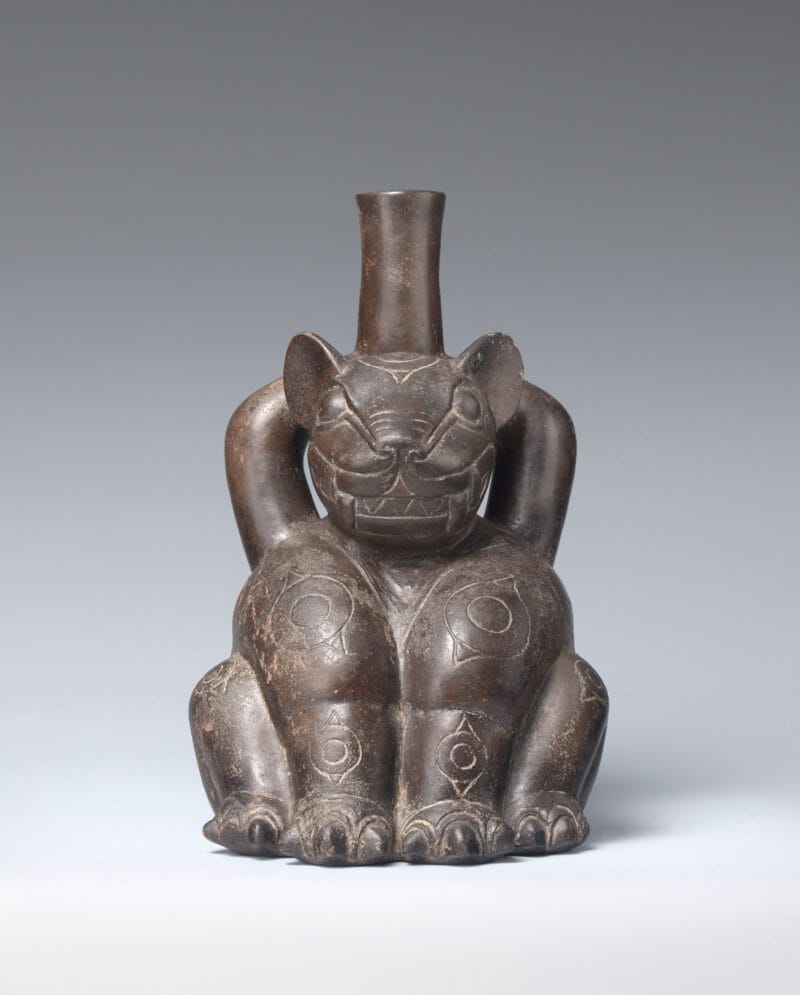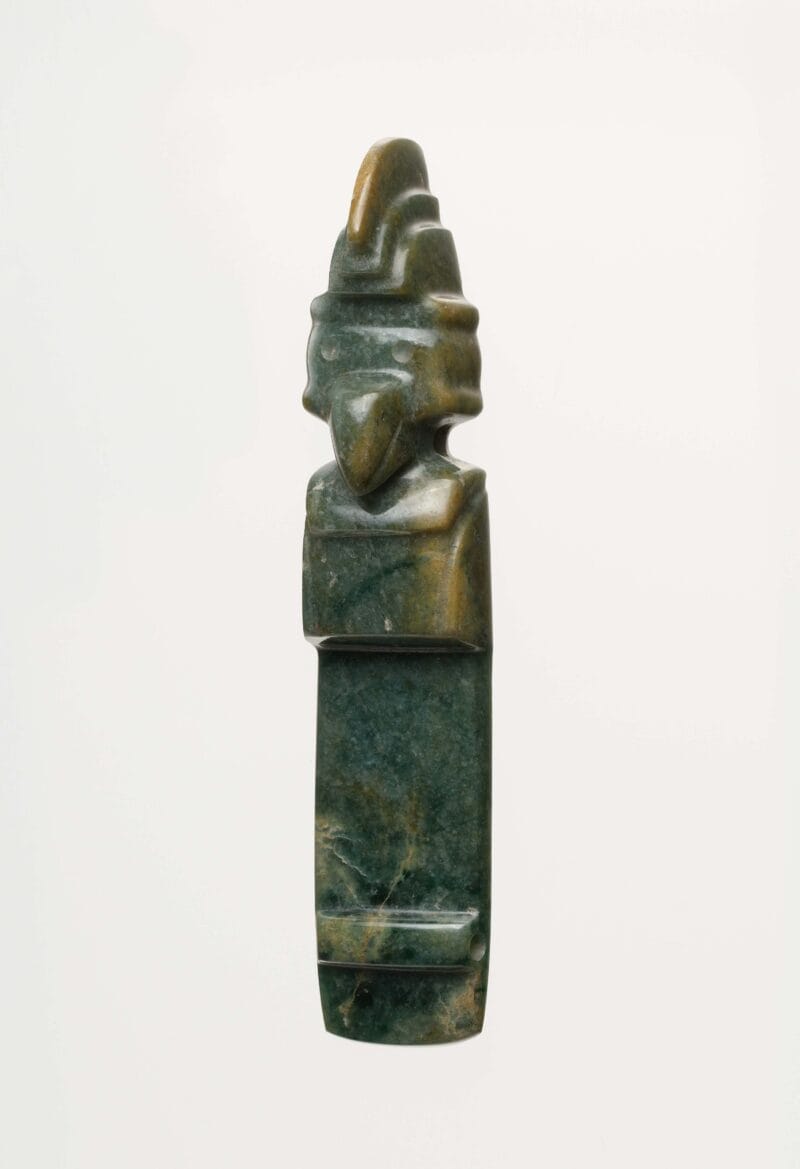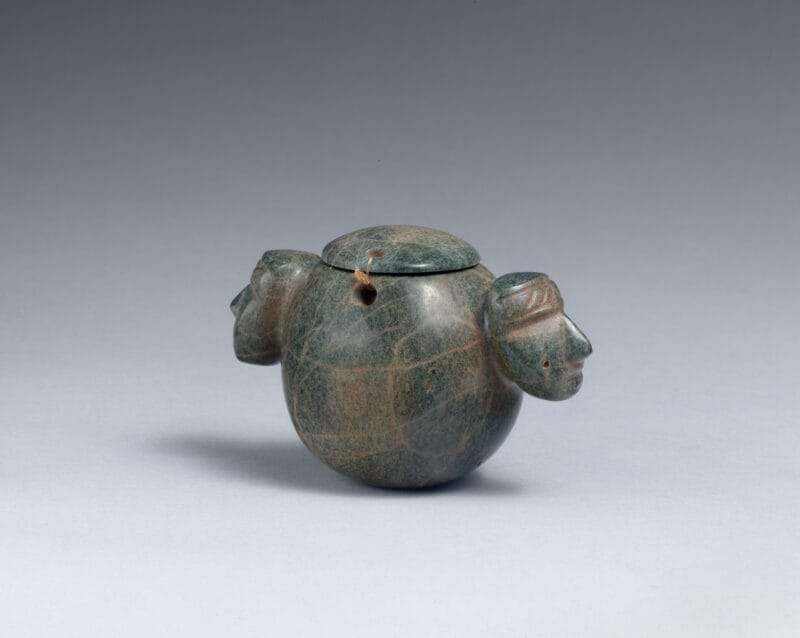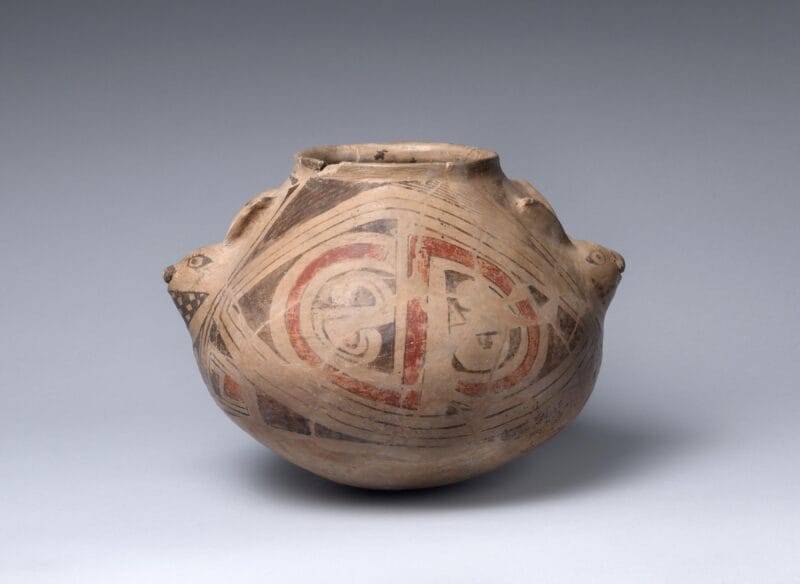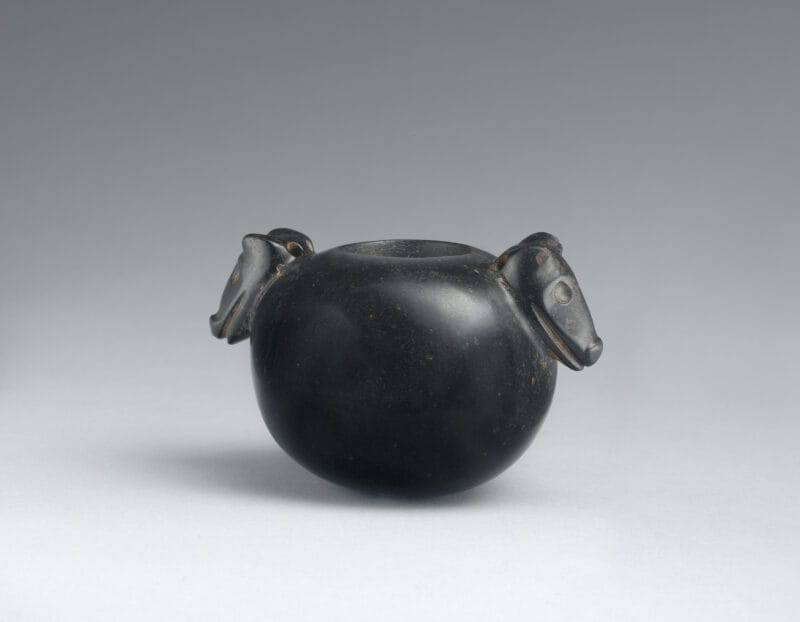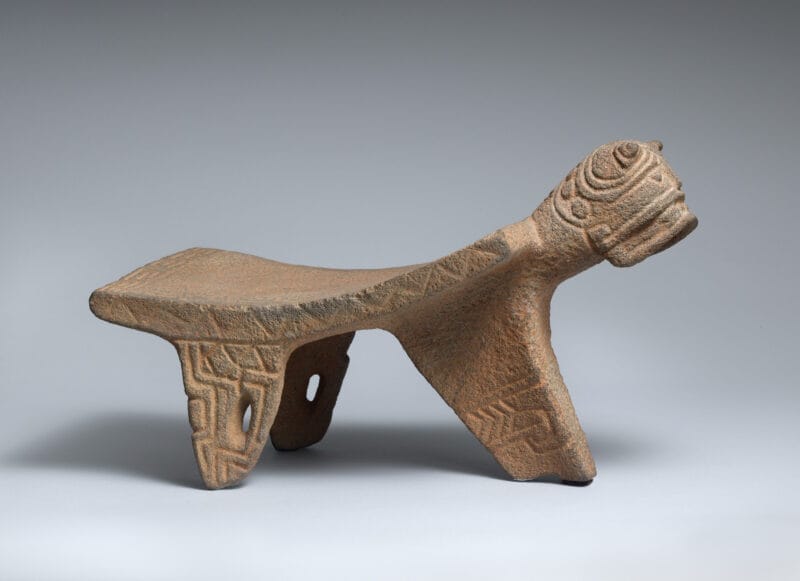
About the Object
Stone metates like the one seen here, carved with the head of a jaguar, were incredibly versatile tools revealing links between the dynamic cultures in what is now Costa Rica with other Indigenous societies in Central America, Mesoamerica, and South America. Metates were used to grind maize and other foods such as fruits and nuts, as well as hallucinogens for ritual consumption, or even to shape clay to produce ceramics. Jaguars lived throughout the Guanacaste–Nicoya regions and seem to have been associated with authority and spirituality, while maize was the food crop that sustained this society.
Additional Information
The Guanacaste–Nicoya or Chorotega traditions indicate trade and exchange across the ancient Americas. For instance, metates first appeared as grinding stones for maize, which was first cultivated in Mesoamerica, or for preparing hallucinogens first discovered in Amazonia or the Andes. In works like this, the intricate carvings, along with the apparent lack of manos, or handheld grinding stones that would be found if these were used only for food and ritual preparation, have led scholars to suggest that these metates may have become used as sacrificial platforms or “thrones” for elites. They argue that all of these uses would symbolically demonstrate spiritual and political control of the food supply, rituals, and the cycles of life, death, and rebirth that were seen as vital to maintaining cosmic and ecological balance.
[Sotheby’s New York, May 17, 1994, lot 318];
[Throckmorton Fine Art, New York, NY];
Sotheby’s New York, Pre-Columbian Art, May 17, 1994, lot 318.
